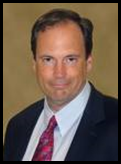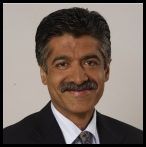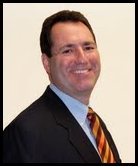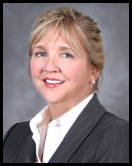Re: Walmart Health: Just had a great dental visit this morning, which was preceded by helpful reminders from Epic, and…
EMR Vendor Executives on Meaningful Use and Certification Requirements – Part Three of a Series
We asked several vendors a series of six questions related the federal government’s recent announcement on the latest proposed meaningful use definitions and EHR certification criteria.
What kinds of practices will be able to reach the 80% CPOE level?
Allscripts – Glen Tullman, CEO
Reaching the threshold of delivering 80% of orders electronically will be easier for physician practices that have had an Electronic Health Record in place for some, giving them time to adjust their previous workflow for orders. Data “get” – receiving information – is always easier at first than data “put,” such as sending orders electronically. In other words, shifting from verbal orders (“Marge, can you draw a lipid profile on Mr. Jones, please?”) to electronic order entry will require patience on the part of physicians, and proactive care on the part of the IT or administrative staff.
That said, as I noted in my response to question No. 2, this transition is not only possible but can be accomplished on a large scale and all at once, if the executive, IT and clinical leaders are all aligned and committed to making it happen — and if the practice has already established full clinical utilization of an EHR. It’s worth highlighting that this requirement is all the more reason for practices to adopt an Electronic Health Record sooner rather than later. The longer they delay, the longer it will take them to accomplish the necessary workflow adjustments, demonstrate meaningful use and qualify for ARRA incentives.
eClinical Works – Girish Kumar Navani, CEO and co-founder
We expect that our customers will be able to reach this level without much difficulty.
Eclipsys – Philip M. Pead, President and CEO
I would expect that any physician office, which has implemented a CCHIT Certified Ambulatory EHR will easily be able to achieve this criteria.
e-MDs – Michael Stearns, President and CEO
The ability to reach 80% CPOE is highly dependent on EHR capabilities, training and the ability to create orders easily and without restraint. This is especially true for specialty practices, as the clinicians may need to incorporate unique orders and order sets during the implementation process. However, the diversity of order types is lower in specialty practices vs. primary care. In either case a well designed EHR supported by content that can be modified should enable the majority of ambulatory practices to meet this objective with relative ease. In our experience adding value to the ordering process by presenting the clinician with decision support generated recommendations has tended to increase the use of CPOE.
GE Healthcare – Vishal Wanchoo, President and CEO, GE Healthcare IT
Those that have a high e-prescribing percentage should be better positioned, as well as those that have focused on using the CPOE functionality in the EHR. I don’t think, at this early stage, we can further generalize by practice size or location.
InteGreat, a MED3OOO Company – Tom Skelton, President
Primary care practices will have the easiest time complying with this requirement. Specialists routinely delegate a much higher percentage of this work to support personnel in the practice. This will be a profound paradigm shift for them. We also recognize that a private practice implementation model is a much different model than a mandated hospital or clinic model. Independent physicians with limited IT resources are going to require more assistance with implementation and a system that is intuitive to use to reach this goal.
McKesson – Dave Henriksen, SVP and GM, Physician Practice Solutions
Physician practices that have already adopted some level of clinical information technology will have an advantage over those that have not. For example, physicians that are already using e-prescribing and need to expand their use of the EHR to include order entry will achieve this requirement sooner.
NextGen Healthcare – Scott Decker, President
We do not think that practice compliance with any criteria will relate as much to a physician specialty as it will to the commitment the physician makes to provide care with health information technology (HIT) as their operating foundation. Part of the EHR selection process for any provider should be a practice workflow assessment with specific emphasis on the manual procedures that will have to be augmented because of the addition of automation. NextGen Healthcare provides several workflow assessment tools to enable a practice to identify these opportunities for procedural refinement.
With the introduction of an automated tool, appropriate changes can be made in the practices’ operations, which will help them comply with meaningful use criteria, regardless of specialty. At NextGen Healthcare, we have always been committed to helping our clients use HIT to practice at the highest level of patient care possible.
Sage – Lindy Benton, Chief Operating Officer
In our experience, those practices serious about tracking orders are most motivated to take on CPOE. Successful e-prescribers should also find it relatively easy to transition to CPOE for other types of orders.
On the surface, the 80% threshold may look like a challenge, given existing workflows where orders are often handwritten on a script pad for patients and communicated verbally to staff, but we find that anything less than 100% compliance raises workflow issues, since you have different orders being handled in different ways.
So, on the one hand, we would be tempted to point to the benefits of CPOE and say that most practices will see the light and respond to the incentive. At the same time, we’ve seen firsthand that CPOE is often easier for larger practices that already have a process for orders management (even if it’s paper based).
The fact that there is not a connectivity component associated with this requirement certainly removes a major obstacle, especially in the context of today’s medical communities where health exchange is seldom more than fragmented.
SRSsoft – Evan Steele, CEO
This will be a huge challenge for most providers. Many systems right now have significant issues with things such as the drug-to-drug interaction alerts. Many providers turn this function off because of frequent “false positives” that occur. Perhaps physicians in lower-volume practices, some primary-care practices and non-fee-for-service / salaried providers will be willing to spend the time it takes to customize and use CPOE. High-performance physicians, typically specialists, are far more sensitive to the effects of reduced productivity, and cannot afford the time required to customize and cope with the time-consuming data input for CPOE. The impact of such productivity issues have been totally ignored by the requirements, and won’t be discovered by many providers until it is too late.
Again, the government-sanctioned committees that have created the guidelines have acted in a way that shows almost a negligent disregard for the burdens that will be placed on providers in this process. When this initiative fails to really produce significant improvements in the healthcare system and runaway costs in the US, hopefully they will focus more on the real aspects that can have an impact.











Frankly I am surprised that a couple of these guys (namely Girish and Pead) seem to believe that the 80% CPOE adoption will be so easy. Either they have incredible confidence in their software and the ability of their staff to affect change management, or, they are incredibly out of touch with the culture of your average physician practice. Steele is correct is suggesting it will be a huge challenge and Skelton understands that the transition will be more difficult for private practices and specialists in general.
Agree with Skelton.
Not so sure who the executives are talking about. Physicians I have met in urban and rural areas are not close to being ready. They want to buy an EMR, but they are unlikely to achieve 80% CPOE anytime soon.
In a typical paper practice, it takes about a year for the practice to flow smoothly with a new EMR. It takes them 6-8 months to figure out whicih EMR to buy. In the best case, private practices will be ready with CPOE June 2011. Which may be late for year 1.
Isn’t this somewhat a chicken and egg question? For starters, those hospitals which have implemented CPOE are in the minority. Executives tell me that the implementation is more difficult than implementing EHR. Since most hospitals have not even selected a CPOE I think they won’t even have to concern themselves with meeting 80% for 2011 as they will not have completed their implementation in time to worry about how easy it is to get to the threshold.
Most of these established EMR vendors (quoted here) sell old, hard to use EMR. No wonder Physicians have a hard time adopting CPOE or EMR. Even large number of training and customization hours/$s (sold) do not result in higher EMR utilization.
Paradigm shift is required. Consumers (including physicians, nurses) order goods, over the web, all the time…but not so easy for CPOE in legacy EMR world. When would these vendors produce an easy to CPOE? We all know web is the lowest cost of producing and delivering software (look at Sales Force) but legacy vendors keeping pushing old client server technology at enormous cost to physicians.
Winning solutions will come from emerging new EMR using web technologies to provide an intuitive system at truly affordable price. Innovation is required to transform nation’s healthcare IT. Sadly, it is not going to come from the old established EMR vendors. In future, HISTALK should also poll new emerging innovative companies.
Great points, however I think a lot of the difficulty has to do with an unwillingness of firms budgeting the time and money to deal with the soft skills needed to do the training, process improvement, and change management. It’s always easier to install than to use.